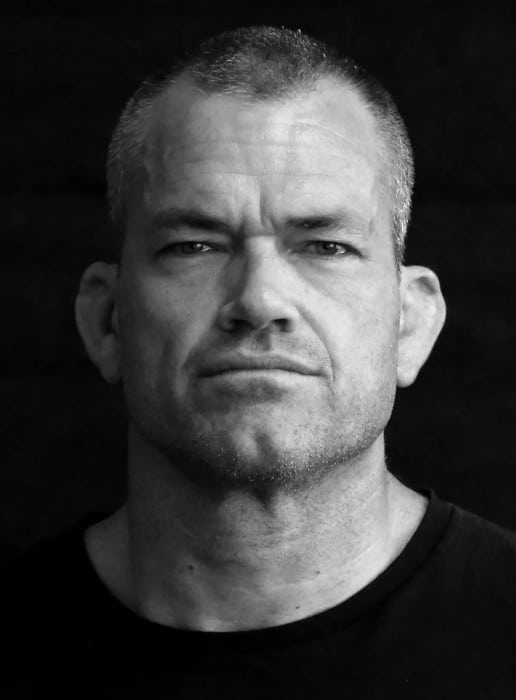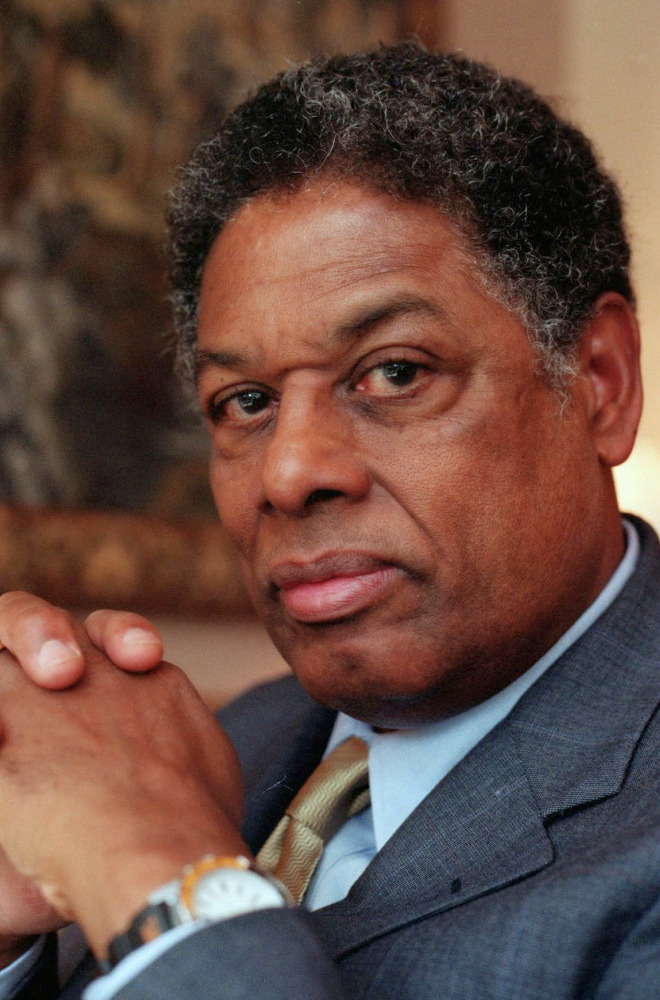 The Best of the Best (at What They Do)
The Best of the Best (at What They Do)
It seems like a whole bunch of people, like Jocko Willink, have used their time in the Navy SEALS to kickstart a variety of careers. Indeed, this unit has attained an almost mythical status thanks to several books and movies about their exploits.
We should remember, though, that these are still primarily soldiers (well, sailors, technically). They’re extremely tough and well-trained, and can often boast about the kind of life experience the rest of us would be happy to avoid. They’re not, however, necessarily qualified to have opinions on everything from geopolitical conflict to flower arranging.
Everyday Lessons from Extraordinary Experiences
This author has managed to stay in his lane, writing mostly about leadership and other lessons he learned during his extensive time in the military and practice of martial arts. He’s also highly articulate, a fact that makes Jocko Willink’s best books stand out from the horde of “self-help” works littering the average bookstore.
While the best novels by Jocko Willink aren’t exactly classical literature, they are invariably entertaining. At least partly, this is because they draw insights from a world Willink used to inhabit, one that is a foreign country to most of us. Let’s take a look at some of Jocko Willink’s books, presented here in my subjective order:
Best Jocko Willink Books
Extreme Ownership

 Perspectives from a Follower Who Became a Leader
Perspectives from a Follower Who Became a Leader
Jocko Willink spent almost a decade as an enlisted Navy man, eventually attending Officer Candidate School as a “mustang” and later rising to the rank of lieutenant commander (equivalent to major in the army). This means, aside from having “been there and seen that”, he has plenty of practical experience of both sides of the leadership coin.
Something he discovered along the way is that the difficult-to-define quality we call “leadership” is often the single most important determinant of success or failure. In his view, the same principles he learned the value of on the battlefield can also be usefully applied within a business, a family, or a team of any kind.
Tactical Concepts Adapted for Everyday Life
The title of each chapter could easily have been drawn from a military manual: Prioritize and Execute, Decentralized Command, and Leading Up and Down the Chain of Command are some examples. Indeed, current and former service members are likely to recognize some of the contents and may well enjoy the anecdotes drawn from life in an elite unit.
Extreme Ownership is not just for them, though. Unusually for a first work, this remains one of the best-selling Jocko Willink books. Part of this is due to its wide relevance: whether you coach Little League or run your own company, you’re bound to find some lessons applicable to your life within these pages.
The Dichotomy of Leadership

 Dealing with the Contradictions of Command
Dealing with the Contradictions of Command
If the next step were always clear, leaders would be a dime a dozen. Instead, the situations we find in real life often come down to an interplay of divergent, incompatible forces: a superior who wants something different from what your team needs, a desire to maintain total control of a project that’s too complicated for one person to manage, unexpected developments that don’t conform to previous plans, or simply having to be assertive without seeming like a jackass.
It is dilemmas like these that are examined in The Dichotomy of Leadership, one of the most popular Jocko Willink books. It comprises a sequel to Extreme Ownership and was also co-written by Willink’s fellow former SEAL, Leif Babin.
Learning the Characteristics of Leadership
In many ways and similarly to many of the top Jocko Willink books, this book is less on how to approach particular scenarios and more about embracing the personality traits all good leaders share. As the title suggests, a lot of this means finding a kind of golden mean.
A leader needs to be resolute without being pig-headed, compassionate without becoming a floormat, and see the big picture without losing sight of the details. Many if not most of us have difficulty achieving this kind of balance, making The Dichotomy of Leadership perhaps the best Jocko Willink book for any kind of manager.
Leadership Strategy and Tactics

 A How-To Guide
A How-To Guide
While books such as The Dichotomy of Leadership give us the big picture, they’re kind of short on specifics. This book takes the opposite approach. It doesn’t make much reference to the theory behind leadership, though already having a few of the best Jocko Willink books under your belt will help you understand the finer points.
What it does, by contrast, is give practical, actionable advice that applies to a variety of situations leaders can expect to encounter. It’s not, however, a simple set of instructions: “If you see this, do that.” Each reader is still expected to apply their own judgment, experience and – perhaps especially – humility to the challenges they face.
An Easy Read
Like the U.S. Army field manuals it is based on, Leadership Strategy and Tactics covers a lot of ground. It’s also written simply, though, as if meant to teach the rudiments of its subject to any soldier or newly-minted officer.
Plenty of the contents, of course, takes the form of recollections from the author’s military background, both during training and on active duty. These are easily adaptable to the corporate world, at least in terms of the examples cited. The reader should keep in mind that there are certain differences in those respective value systems, though. For instance, taking the blame for your subordinates’ mistakes is simply the decent thing to do in the military. In most civilian businesses, you’re expected to toot your own horn a little more if you want to have any hope of promotion.
Way of the Warrior Kid 1: From Wimpy to Warrior the Navy SEAL Way

 The Courage to Become Your Best
The Courage to Become Your Best
It has become bizarrely fashionable for people over 40 or so to tell the world how much better they are than those younger than them. Lazy, entitled, narcissistic, indecisive…all these qualities and more are (unfairly) described as the hallmarks of an entire generation.
Fortunately, this author doesn’t merely jump on the bandwagon. In this, the first book of what is probably the best Jocko Willink series, he instead offers valuable, pragmatic guidance to kids of approximately six to twelve years of age.
Timeless Values
This advice is much the same as that you probably received from your own parents or grandparents. Way of the Warrior Kid focuses on the value of hard work, planning, self-discipline, and self-respect. These are instilled by the young protagonist’s SEAL uncle, who is obviously a mouthpiece for Willink himself.
Many Jocko Willink book reviews point out that much of this book isn’t necessarily suited to the needs of children in the modern world. Very little of it, to be fair, is aimed at girls. Still, it can certainly serve as a relatable, motivating example to many preteens, even if they end up devising their own version of “the Path”. Even their parents may find these four books to be the best Jocko Willink novels. On the other hand, the author’s tendency to be a little pedantic, as if his answers should apply to everyone, does become annoying at times.
Discipline Equals Freedom

 Discipline Comes from Within
Discipline Comes from Within
One constant yet unspoken theme in the best books by Jocko Willink is the inherent relationship between discipline and freedom. Many people naturally regard these as opposites. However, this makes little sense once you, like the author, start to think of discipline as an internal quality and not something imposed on you by parents, teachers, bosses, and officers.
If, for example, you lack the self-discipline to exercise and eat right, the only freedom you can expect is that of a slob. Applying your willpower instead gives you many additional, more enjoyable options in life, and that’s really what freedom is all about.
One Day at a Time
To Willink, procrastination, weakness, and indecisiveness aren’t inborn flaws meant to be passively accepted. They have to be challenged, not only to achieve success in whatever field you choose but as a route to personal development. There are no acceptable excuses for putting off this important task. There are also no shortcuts: persistence is the only way to triumph over your inertia.
The previous paragraph pretty much describes the essence of Discipline Equals Freedom. Its real strengths, however, are the uncompromisingly motivational tone it takes with the reader plus the many practical tips and strategies for success. For these reasons, this is almost certainly Jocko Willink’s best book on personal development.
The Code. The Evaluation. The Protocols

 A Barometer for Personal Achievement
A Barometer for Personal Achievement
One flaw you may notice in most of the entries on the Jocko Willink book list is his tendency to think that his military experiences can be translated directly to all facets of life. Clearly, this isn’t the case. In particular, he likes to assume that performance in all of its various forms is objectively measurable. This is true for a Navy fitness test, but not so much when it comes to human relationships.
With this book, he makes up for some of this shortcoming. As always, he praises discipline as the key to becoming an “Eminently Qualified Human” – something which, as Willink points out, each of us has to define for ourselves. What he does in this book is present a set of tools to help you measure how well you are doing at whatever is important to you.
Living Up to Your Own Standards
Becoming an Eminently Qualified Human is a marathon, not a sprint. This is why self-discipline is so important. If circumstances beyond your control deal you a blow, or you screw up temporarily, you should simply continue doing the right things and tracking your progress.
Unfortunately, this is not the best-rated of the Jocko Willink books. Some of the advice given is pretty superficial or patronizing, while the whole thing gives the impression of having been rushed to the printers way too hurriedly.
Way of the Warrior Kid 2: Marc’s Mission

 Building on the First Book’s Message
Building on the First Book’s Message
This is the second installment in Way of the Warrior Kid, the best Jocko Willink book series, and something you can certainly consider as a gift for any tween or teenager you know. The first book is primarily about building healthy habits that can last you a lifetime. This one, among many other things, is about how young adults should aim to interact with the world at large.
At the start, our protagonist is already in way better shape than when we first encountered him. He’s taking care of his mind and body and reaping the rewards. There are always new challenges to face, though, and it’s once again his Uncle Jack who guides him through these.
Taking Control of Your Life
Very few teenagers are truly happy with the state of their lives. Changing your circumstances, and indeed your outlook on them, inevitably takes a positive effort. In the end, this is what makes leading a disciplined life so rewarding.
The extreme devotion to self-control, hard work, and moral integrity this author believes in has certainly propelled him to success in multiple fields. It may be, however, that this idea is overemphasized in Way of the Warrior Kid up to and including Jocko Willink’s latest book in the series. After all, kids need relaxation to develop, too, and expecting them to go from an Xbox addict to a “warrior” virtually overnight may be asking too much.
Final Spin

 Set in the Familiar World
Set in the Familiar World
Jocko Willink’s new book was eagerly anticipated by many of his loyal readers. What surprised many of them is that this isn’t a story that involves assault rifles and attack helicopters. Instead, it’s mainly about characters and circumstances many of us can relate to: dead-end jobs, a lack of future prospects, disappointing parents, and no clear way out.
What makes this book special is that the author manages to apply the same values of compassion, self-sacrifice, and personal responsibility he learned in the military to entirely ordinary people and situations.
Mainly for Die-Hard Fans
Unfortunately, this short, easy-to-read book is not the best Jocko Willink novel compared to any of those aimed at young readers. It’s not even, objectively speaking, good fiction.
None of the characters are especially well-rounded, the plot is anything but groundbreaking, and the writing gets a little tedious at times. It is, however, entertaining and not too lengthy. People who found Willink’s other works helpful will almost certainly enjoy seeing another side of this author.
Way of the Warrior Kid 3: Where There’s a Will…

 More of Young Marc’s Adventures
More of Young Marc’s Adventures
There’s an excellent chance that this protagonist will have grown up and had kids of his own before his loyal readers get tired of him. Following the events in Marc’s Mission, he’s diligently living a self-directed life. He still has much to learn, though, including that developing humility is the best antidote to unproductive jealousy.
Envy without malice can, however, also serve to inspire us to do better. This is where the willpower referred to in the title comes in. Those who are willing to keep going even in the face of discomfort and setbacks are the ones who end up as life’s winners.
Celebrating Inner Strength
The plot of Where There’s a Will is satisfying, but perhaps less fast-paced than the previous two books. (It’s also possible that I’ve just gotten used to the Way of the Warrior Kid books by now.) The importance of exercise, dealing with conflict in a productive manner, and learning a skill such as jiu-jitsu (Willink’s own sport, as it happens) still take center stage, though.
As with the other books in this series, the author’s stern code of conduct and uncompromising way of delivering it may be a little counterproductive. On the other hand, nobody is going to accuse him of lacking sympathy or being unwilling to treat others fairly – this is another major theme of these books.
Way of the Warrior Kid 4: Field Manual

 A Practical Guide for Children
A Practical Guide for Children
By now, our protagonist has a firm grasp on Willink’s “way of the warrior” (one that shares several parallels with the more mystical one described by Carlos Castaneda, interestingly enough). A new challenge falls into his lap, though, namely teaching these principles to another kid.
You could say that this book is a kind of summary of the first three. Rather than a conventional narrative, this field manual is more structured. Each theme is treated as a unit and grounded in practical advice – parents concerned about the path their own children are on may well find this format more useful than the previous novels.
Not Just for Kids
Many adults will consider a book like Discipline Equals Freedom a little too heavy to start with. This one is much more approachable yet contains many of the same inspirational messages: learning is a gradual process, failure is nothing but an opportunity to learn, and giving up on something just because you don’t see instant results is inexcusable.
Developing your inner strength and adopting the kinds of routines that eventually lead to success is certainly a laudable goal. It’s not, however, something you can achieve in an afternoon. Nor do most of us aspire to the heights and types of accomplishments Willink himself achieved. If you believe in taking it slow and focusing on one aspect of growth at a time, this may be the self-help book for you.
Final Thoughts
One of the defining characteristics of Jocko Willink as an author, podcaster, and coach is that he believes in his own message completely. This absolute sincerity and consistency are sometimes lacking in many people who write about personal growth, leadership, and similar topics.
At the same time, this kind of conviction and self-assurance can also come across as dogmatic. He tends to present his advice as fundamental truths, applicable to nearly any situation. There’s plenty of wisdom to be found in Jocko Willink’s books, especially ranked against other authors in the self-help genre. It’s best to actually think about what you read, though, instead of simply taking every detail on faith.
Michael Englert
Michael is a graduate of cultural studies and history. He enjoys a good bottle of wine and (surprise, surprise) reading. As a small-town librarian, he is currently relishing the silence and peaceful atmosphere that is prevailing.






